On The Record with Austen Ramer, Head Men’s and Women’s Water Polo Coach at Ottawa University
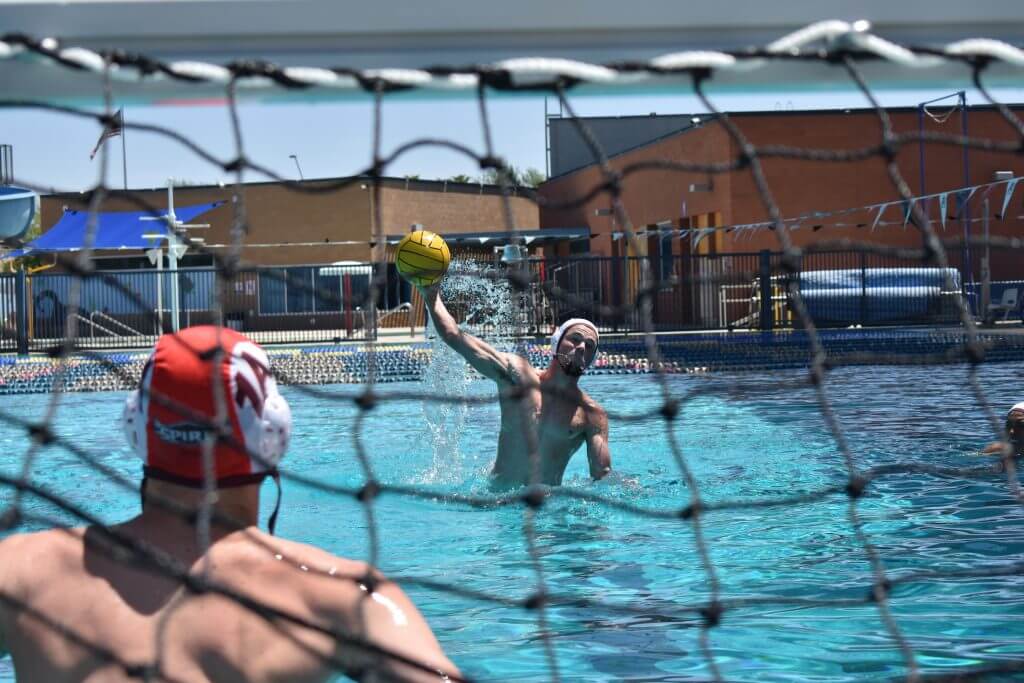
The vibe around water polo in America is undeniably positive. From the incredible success of the U.S. women’s national team, to recent strides by the American men, to expanded opportunities for intercollegiate competition, the outlook for the sport is decidedly upbeat.
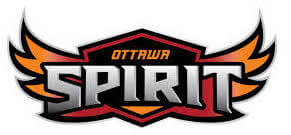
Representative of this optimism is a decision by Ottawa University to add men’s and women’s water polo programs starting this fall. The private liberal arts university in Ottawa, Kansas has a satellite campus in Surprise, Arizona. That’s where the Spirit men will start play this Saturday under the leadership of Austen Ramer, a one-time Cal Baptist player who the past six months has moved his program from idea to reality.
Ramer, who has overcome numerous obstacles to get his team—the only men’s intercollegiate program in the state of Arizona—ready in time for the Air Force Invitational in Colorodo Springs, spoke with Swimming World about his new program, the challenges of being a start-up in a state without the sport and how he expects his men to be competitive from the first ball drop.
– Not only are you starting a men’s team this fall, you’re launching a women’s program next spring. That’s a big undertaking.
It’s been a fantastic six months. I’ve met a lot of great people who have helped me along the way, a number of programs that helped support us.
I’m thankful for all the people who actually said no, [the] people who didn’t respond to me. It led me to a fantastic group of young men and women who I’m very excited about for our upcoming seasons. All things considered, I believe we can have a successful year. I got a lot of blue chip, blue collar kids; everyone’s on the same page, hungry, chomping at the bit.
– We met last summer at the Oak Christian combine—which was an opportunity for athletes and their parents to learn about how your program is distinctive.
Really, it’s about letting kids know about the different options that exist—especially in our great sport. There’s Division 1, there’s a couple of DII’s, and then the DIIIs, with their [focus on] academics.
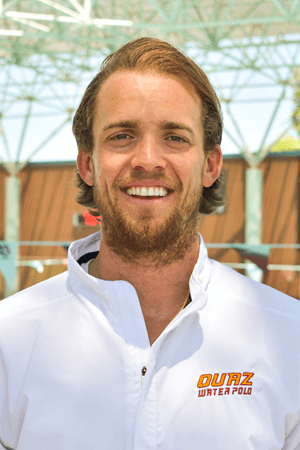
Austin Ramer. Photo Courtesy: OUAZ
We are an NAIA program—the National Athletic Interscholastic Association—the one and only NAIA program in intercollegiate water polo. We have different scholarships and a lot of other things different from the NCAA, but we’re all playing the same sport, we’re at the same tournaments.
Letting kids know there’s options that fit them best—their strengths and their needs—and we’re all competing, we’re all doing the same stuff. So a combine like that is a great way to connect with the coaches. Because every kid in high school, especially in their sophomore, junior years, they think they’re going to the Big Four, which they should, they should have massive aspirations.
But when the fog starts settling and things get a bit clearer, it’s about what’s the right type of university for you—and your needs as you making that transition from high school to college.
It’s really awesome to get a group like we have coming in, to mesh and gel together. It’s the right place for all these kids at the right time, and the sky’s the limit.
– I’m on the East Coast, so I see I have a view of the sport from outside California There are tons of athletes up and down the East Coast looking for opportunities to play—and they don’t get the same level of interest as the California kids.
As far as opportunities, in the state of Arizona, there’s one club team here, Mesa Aquatics, and that’s it. There’s a brand-new club called Topac and I’m starting a club called Covey Aquatics. We’re trying to pump up this area as far as water polo. Schools like us, Austin College, Penn State Behrend, Salem; we’re starting to connect the East Coast with these programs.
[On The Record with Justin Kassab, Head Coach For Salem Women’s Water Polo]
But as far as building it up and laying it out, again, all these kids, “Hey, if I don’t go to California or one of these big schools on the East Coast, well where do I go?” We are part of that growth, we are a part of that opportunity. And then, especially with our values, we’re trying to build it up and really aim high. That’s what we’re going for.
–The diversity of teams on your schedule now and the diversity of opponents is great. Programs from Pacific to Princeton to McKendree and Austin and Penn State Behrend. Given that the Spirit are not in a conference, how does this schedule come together?
Our worst thing is we’re not in a conference. Our best thing is we’re not in a conference! I don’t have a set limit on games, really as many games as we can do. I’m trying to get some international dates. I’ve had preliminary talks with University of Toronto and St Andrews College in Scotland. On average, I’m trying to get at least 30 games a year, which is 10 to 15 more than a lot of other schools can play.
It’s a different opportunity. We don’t have a post-season. Obviously, we would like to get to that point. I’m a Cal Baptist alumni, and I was there when CBU was NAIA. That’s our aspiration, but right now we find ourselves in this little niche, and, I’m running with it. We’re making lemonade!
Cal Baptist, Fresno Pacific and Concordia Irvine all used to be NAIA until they made the transition. And then also Lindenwood used to be varsity, now they participate in the Club Championships.
A number of schools have been there and then made that jump [to NCAA status]. As far as us, it’s a blessing that we’re the only NAIA team, but we’re playing all these other great, well-established programs.
Our kids are getting that. We’re NAIA, but we’re pretty much Division 1, you know, we don’t have postseason, but we’re playing a D1 heavy schedule. It’s obviously a huge challenge that is in front of us, but it’s a pretty fun one. So-
– How many sports watchers in America realize that the diversity of polo in America? That DI, DII and DIII programs all compete together, like Pomona-Pitzer, that regularly go to the national championship.
Alex [Rodriguez, head coach] has done a fantastic job with that program. When I was at Cal Baptist my freshman year, that was his first or second year there [and] we had some great battles with them,
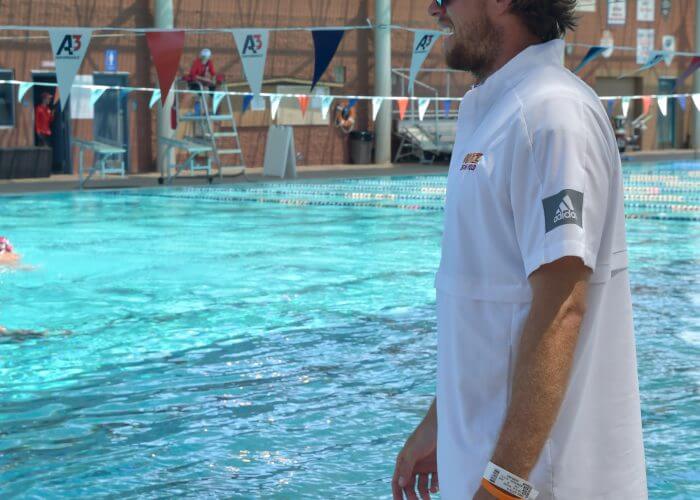
Photo Courtesy: OUAZ
They’re really one of the best programs in the country and they’re a Division 3 program. There’s a lot of parity that you’re able to create within our great sport simply because we’ve got a lot of smart, athletic, talented kids.
With the number of programs that there are, there’s a lot of appeal to go to a DIII versus a D1, because again, we’re all playing each other. It makes it a fun, open playing field. Especially as we hop in the deep end here, it’s exciting as well just to get caught up with everybody else. It’s going to fast track our growth and what we’re trying to accomplish.
– What’s the university’s plan for its own aquatics facility?
Our main campus is Ottawa Kansas, which was established in 1865. This campus is going into its third year of existence. We just built a brand-new dorm, brand new student union center, brand new gym, football stadium, athletic training facility. I have submitted plans—and I believe we’re at the top of the list—for the next facility, in the next two to four years.
Currently, we are at the Southwest Regional YMCA, which is about 15 minutes from our campus. It’s a 60 meter, outdoor, completely shaded pool. It’s actually run by Darian Townsend. He’s an Olympic gold medalist in the 100-meter backstroke for South Africa.
[World Masters Spotlight: Laura Val & Darian Townsend]
He’s been nothing but helpful as far as supporting our program. It’s a fantastic facility that they have and we’re pretty happy being at the YMCA and having Darian help us kick-start this program.
– But, as an NAIA program, your restricted from participating from in NCAA post-season play, including the new DIII national tournament.
I’m uber competitive. I don’t care if it’s UNO with grandma and she’s about to draw four, you know? Our goal is to aim high and with our schedule, we can’t be afraid of anyone. You only learn how to swim in the deep end.
And as far as our progression, we’re in a unique spot because, yes, we’re NAIA so we’re a varsity program, so we can’t go to Club Championships and obviously not being a part of the NCAA, we’re banned from that postseason.
Right now, we have about 800 students at Ottawa University [in Surprise] and all but 30 of them are athletes. We’ve got everything from football to bowling. We’re getting our foothold… as the school builds, as soon as we can, we want to jump in a conference.
Again, the best thing is we don’t have conference. The worst thing is… we don’t have a conference. It allows us right now to get established, get caught up as far as our experience and our playing fields, so when we do make that jump, we’re not starting from the bottom.
Austin College, Mark Lawrence, he’s done a fantastic job, but you talk about jumping in the deep end, he’s in the MPSF as a DIII, him and Penn State. It’s tough to get going when you got those kind of conference games as a year one program.
For us, it’s a blessing that we get to buy some time and build up. When we do get into conference play, we’re going to hopefully be right there at the top, ready to go.
For Austin, there’s no one in the state of Texas for them to compete against. They picked MPSF.
[What’s Wrong with This Picture: Novice Water Polo Program Joins MPSF?]
It’s only going to expose weaknesses sooner and fast track their growth. Mark is definitely in the right position and he’s the right man to help see that grow. We’re in the same spot as well. We’re the only men’s team in the state of Arizona at varsity level. [University of Arizona] and ASU have club, and we’re the second women’s varsity program behind ASU, but we are part of that growth.
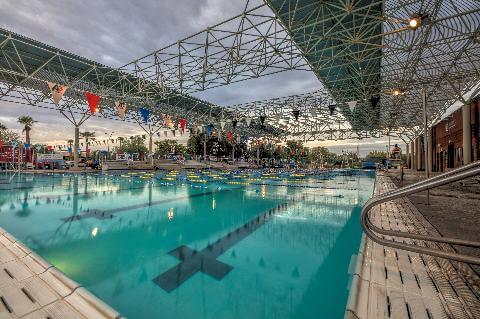
Westside YMCA in Arizona. Photo Courtesy: YMCA
That’s the exciting part. I don’t think we’ll ever be DIII, but as far as the expansion throughout the Southwest, I think that, with us starting up, hopefully other programs, like a GCU [Grand Canyon University] or an Arizona Christian—or maybe some other schools in Texas start seeing that this is a great sport, this is a great program.
As far as growth goes, as far as the sport, we’re gaining momentum, and Austin College is part of that. I will be shocked if more [colleges], especially in the Southwest, don’t add more programs.
Arizona is huge. Swimming and baseball here are massive sports. That’s why just having club teams and having a varsity program now like us… I think that Arizona should be one of, if not the best, states of water polo. And right now it’s probably the worst.
– Todd Clapper has done a fantastic job building up the sport at Arizona State.
Todd has been nothing but 100% supportive of me and Ottawa University’s program. Our women’s team is going to be in all three of their tournaments this upcoming year. He’s got me connections with ASU’s men club team to set up scrimmages. He’s been really a great resource as I’ve gotten things going.
As far as competing with them, obviously there’s a big road to get there, but I think [Clapper] has a vested interest in us as far as the growth within the state and then with water polo itself.
[On The Record with Todd Clapper of Arizona State Women’s Water Polo]
[In Arizona] they have opportunities year-round, in great facilities that definitely raises that standard pretty quickly. You know, and obviously having sunshine year-round helps that progress.
– It’s your inaugural season. How does one define success for a new program like yours?
Honestly, our goal this year is to go for a .500 record. We have a really tough schedule ahead of us. The guys that I have brought in though, I couldn’t be more excited about the group that we have, the continuity that we already have grown, and I anticipate growing further.
It’s really a great group of young man that I have the honor and privilege to lead into this. I couldn’t have asked for a better group.
As far as our success, it’s the same as it was with the Cal Baptist. I made that UNO reference, but every game for us is a championship game. And being a first-year program, I tell these guys, “We have really nothing to lose. If we don’t win a single game, no one’s really going to bat an eye.”
We’re just going after opportunities. We have an expression around here, I call it “cookie monster”, you know, just go for the next one. Don’t even think anything else, just keep pushing that envelope and be better than yesterday and not as good as tomorrow.
Every game for us is going to be our standard of measure. But like John Wooden, I never really judge off of wins and losses. It’s not so much that, as it is growth. If we do the best that we’re capable of doing, we focus on ourselves, we’re not comparing ourselves to other people, are we getting better every single day?
I believe we have the right group of young men and women who have really bought into that and understand that we’re laying the foundation here for the really beautiful program we’re trying to build
“Success is peace of mind which is a direct result of self-satisfaction in knowing you did your best to become the best you are capable of becoming.” John Wooden



